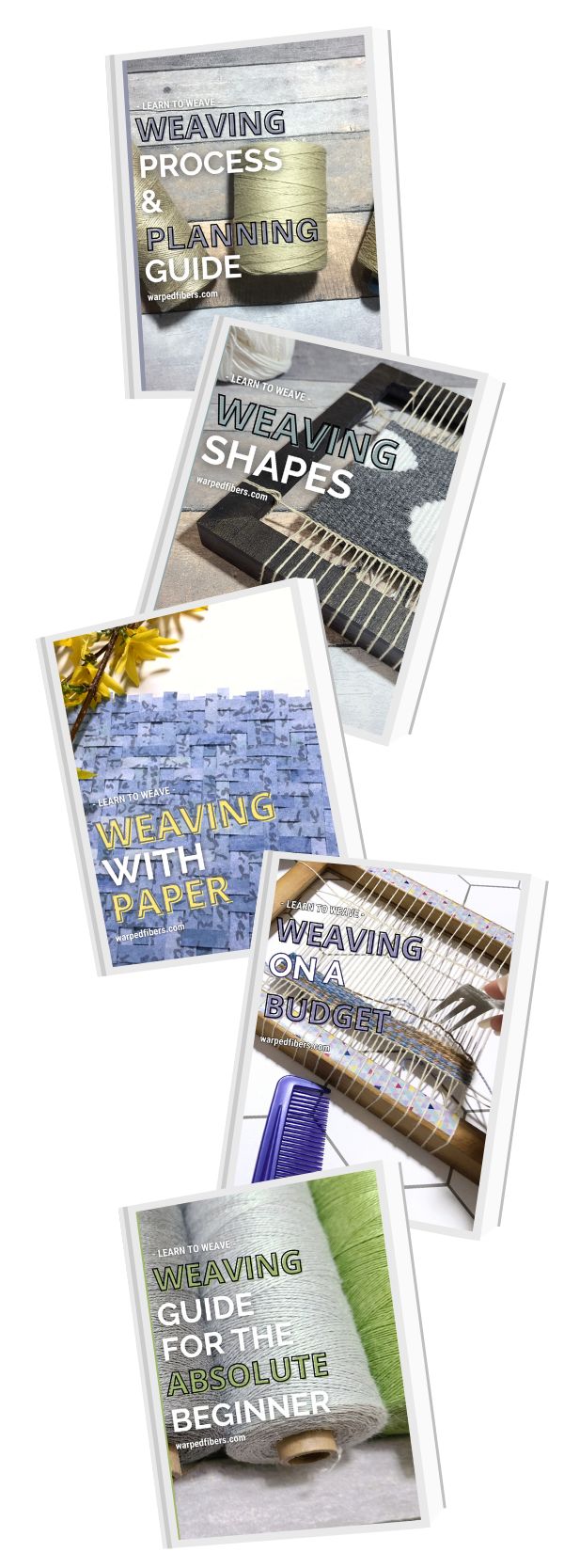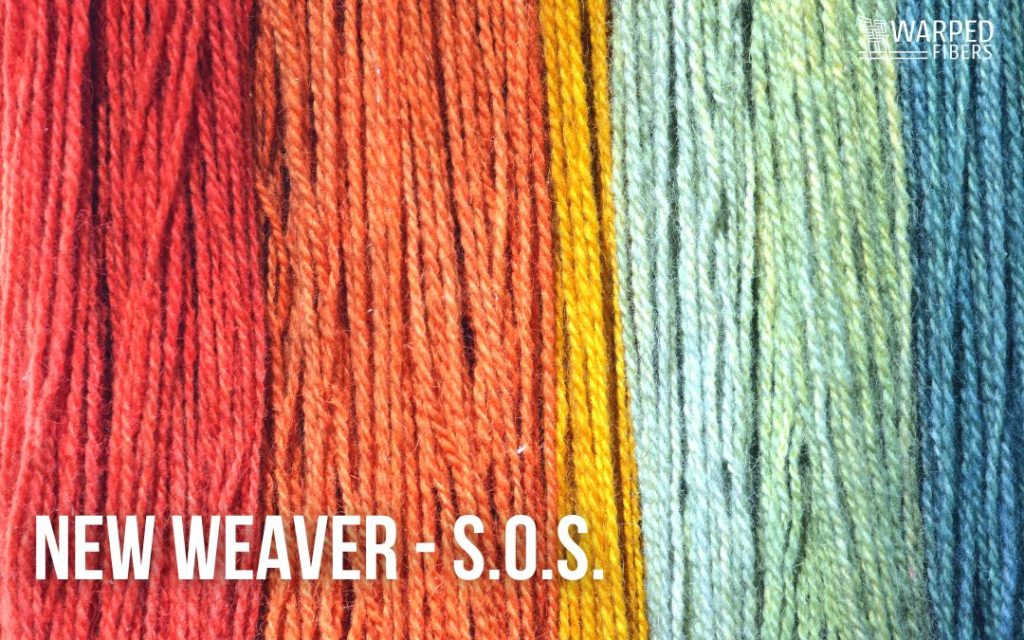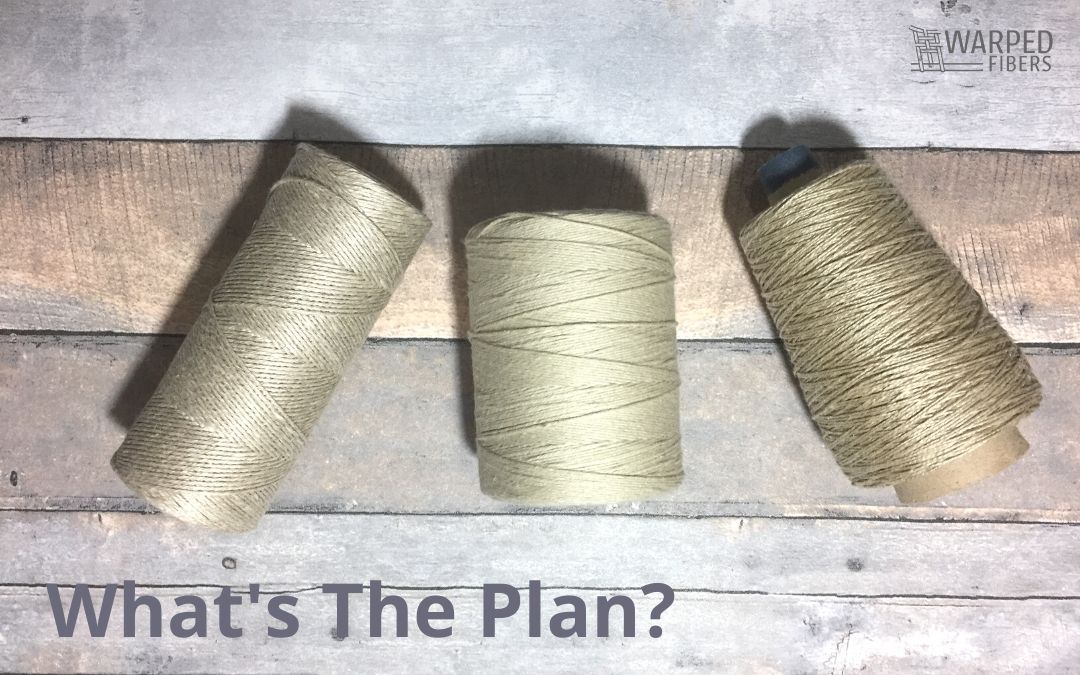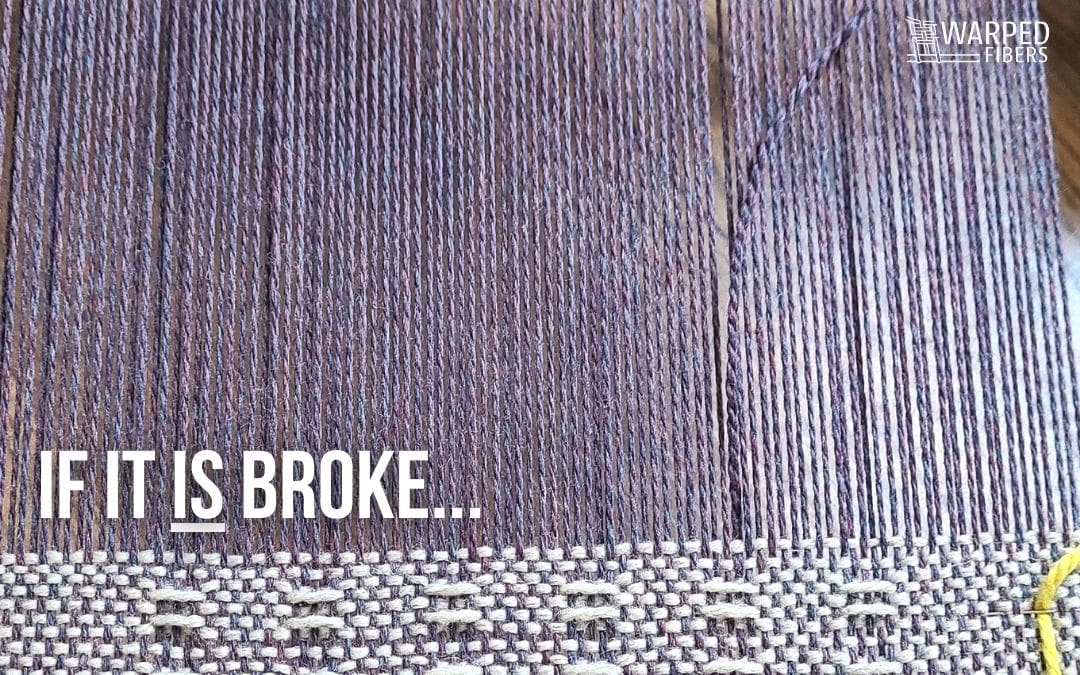If you talk to any creative person, I bet that the finishing of their work is probably their least favorite part of their process. This is not always the case, but it seems to be pretty common! For weavers, it is often tied with planning the weaving or warping their loom. Just because it isn’t your favorite part, though, unfortunately does not mean it isn’t important. Knowing how to correctly finish your weaving is important to not only the look, but also the longevity of your finished piece.
You may even enjoy finishing because it is when things start to really seem… finished.
Hemstitch is probably one of the most common ways to finish up your balanced or pattern weaving when it is time to take it off the loom.
Jump To:
- What is hemstitch?
- When should you use hemstitch?
- When would you not want to use hemstitch?
- How to hemstitch
- Hemstitch video tutorial
- Complementary Finishing Options
What is hemstitch?
Hemstitch is a finishing technique that secures your warp in place so that when you take it off the loom – and it is no longer under tension – the weft doesn’t slide around and un-weave!
It is created by either using leftover weft yarn or a brand new yarn that you attach. Depending on the option you choose you can give this stitch a different look. If you decide to use a new yarn you can even choose something that will stand out from the weaving to emphasize the hemstitch.
Either blend it in or make it BOLD.
While you can use the same finishing methods on tapestry and balanced weave – methods like hemstitch are done most often on functional work like towels, scarves, and table runners. This is because it is a visual technique that bleeds onto the front of your weaving. This may not lend itself well to your tapestry, especially if your tapestry is image based. The images in this post, though, will be demonstrating hemstitch on a tapestry. This actually makes it very easy to see due to the density of the weaving. When it comes down to it hemstitch on balanced weave and on tapestry are done the exact same way.
So you can use it for tapestry if you want.
You do you.
Later in the post, we will also explore hemstitch on a balanced weaving with a video tutorial.
Most weavers use only hemstitch to finish their weavings. On its own – if done correctly – it should keep your weft in place without the addition of anything else.
Paranoia, though, usually makes me use it as a step in the finishing process. I like to make sure things are really secure. I also like the look of a knotted fringe on my scarves and other functional work, so I use them together. That does not mean that you have to, just sharing my own thoughts. One great thing about hemstitch is that you can easily combine it with other finishing techniques like knots and macrame if that is your thing.
Another note: if you are only using it as a part of your process and not your sole finishing technique then you have the option of taking out the hemstitch after it has served its purpose! Once you add in your other technique of choice just carefully cut out the hemstitch and you should be good to go. If this is the route you want to take then you should definitely choose a different colored yarn. This will make it easier to differentiate between your weaving and what needs to be cut-off.
When should you use hemstitch?
If you are worried about your weft moving after taking off the tension then hemstitch is a great option. It is very secure and simple to do once you get the hang of it. Since you have the option of weaving it so it blends in or stands out you can decide how much or how little you want to see it!
I have seen many weavers use hemstitch only for their finished fringe. This makes a softer look at the top and bottom selvedges of your weaving than using knots would. This comes down to preference mostly. Do it if you like the look of it or skip it if you don’t.
photo courtesy of student Caroline Keys
One of my favorite times to use hemstitch is when I am weaving more than one weaving on the same warp. This is a great way to secure your warp when you will have only a small spacer between your weavings. When weaving multiple weavings you will want to minimize the space between them so you are not wasting any yarn. Keeping this space small means that you will not be able to easily use knots when taking it off the loom. Using hemstitch in this case makes releasing the tension from your weaving on the loom a less stressful experience.
Who doesn’t want a less stressful experience?
When would you not want to use hemstitch?
Hemstitch is not the fastest technique.
Especially if you have a larger weaving, the time it takes you to hemstitch is something to take into account. So if you are short on time then it might not be the best option.
Also, if you plan to take it out at a later time then you may not want to spend the time to do it. This is where it is important to know how you want to finish your weaving before you even start since hemstitch will usually be done at the beginning and the end of the weaving.
Learn more about the weaving process and planning your weaving here.
This also includes when you want a clean edge.
In this case, you might want to consider simply folding a bit of your weaving under and hemming it. While I have done this with a weaving the I previously hemstitched, ultimately the time it took me to do the hemstitch seemed like a waste since I had to take it out anyway.
How to hemstitch
Hemstitch is easiest when your weaving is still under tension.
This goes back to my previous point that you will need to know how you want to finish your weaving when you are still planning it. If you want hemstitch at each end of your weaving it is much easier to hemstitch the beginning when you are still at the beginning of the weaving. While you can wait and do this after it is off the loom, it will be harder this way.
Let’s get started:
You will want yarn that is at least 4-5 times the width of your weaving to make sure you have enough without having to stop. This may be overkill, but it’s better to have extra yarn than not enough. If you are using yarn that is not already attached (the remainder of your weft) then you will have to leave a tail on the back of the weaving to tuck in later.
You can do your hemstitch from right to left of left to right. It doesn’t really matter. I usually go from right to left (probably because I am right-handed.)
- Come up through the back of the weaving at least 2 wefts down and 2 warps in to make sure it will be secure. Go down more if you want a more dramatic look.
- Take your hemstitch yarn and float it vertically on the surface of the weaving. Make sure you don’t pierce your weft yarn and instead go between your weft rows.
- Go under at least two warps and then around those same two warps so that your yarn ends on the back of the weaving.
- Come back up through the back of the weaving a few warps over and down. If you want a consistent look then make sure to do this the same number of warps and wefts as when you started.
- Repeat all the way across!
- When you get to the end – wrap your yarn around your last two warps and instead of coming back up – tuck your yarn down a warp channel for tapestry or weave next to a warp for balanced weave. Cut any excess on the back (just like your yarn tail from the beginning.)
The number of warps that you bundle together depends on your EPI and your desired look. If you go around too many warps, though, it loses some of its effectiveness in the long term. I would not go around more than 4 warp yarns at a time unless you have a very dense warp sett. If you plan to take your hemstitch out later then going around more warps should be fine as long as it is not getting handled a lot.
There is also a video below that you can watch where I do hemstitch on a balanced weave.
Variations – Fun Ways To Add Emphasis
- Use a different color for the hemstitch that is either contrasting or complimentary. Think bold colors against neutrals or black against white.
- You can change up how many weft yarns you capture in your hemstitch. Try doing different patterns like 1 long, 1 short, repeat, or vary it in a graduated pattern to create triangles!
- Instead of keep your lines completely parallel, consider bringing your yarn at an angle. (You’ll see this one in the video)
Hemstitch video tutorial
Don’t forget to like, comment, and subscribe ❤️
Complementary Finishing Options
The simplest method to finish off your warp ends is to use overhand knots that sit flush with your weaving. This is often used for scarves or anything that requires a fringe made from your warp. When using knots by themselves and not with a hemstitch, you can use the same method as the simple ties I talked about above. Cut only a few warps at a time to keep the weaving under tension. When using them with the hemstitch – just follow the knot instructions!
Other decorative options for your fringe are macrame or braids. Macrame would be best done with hemstitch as a precursor so that it keeps everything in place.
Do you have a favorite finishing method? Let me know in the comments!
⇣ Love It? Share It! ⇣
You May Also Like


























Great hemstitch video! I have never tried it and never understood some of the directions I have read in the past. Would try now!
Thank you.
Thank you! So glad it helped!
Will this stitch work at the beginning instead of a twining stich?
Hemstitch can be done at the beginning and end of your weaving! It wouldn’t work to establish your warp sett because it does need some weaving to attach onto, so keep that in mind.